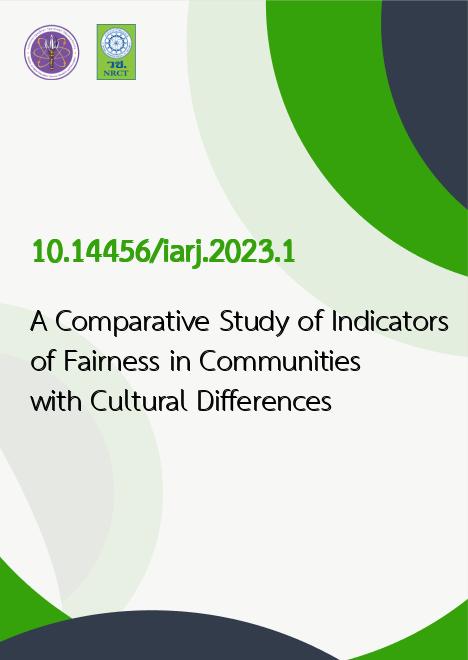
|
A Comparative Study of Indicators of Fairness in Communities with Cultural Differences |
|---|---|
| รหัสดีโอไอ | |
| Creator | Wuttichai Saybunjaung |
| Title | A Comparative Study of Indicators of Fairness in Communities with Cultural Differences |
| Publisher | DR.KEN Institute of Academic Development and Promotion |
| Publication Year | 2566 |
| Journal Title | Interdisciplinary Academic and Research Journal |
| Journal Vol. | 3 |
| Journal No. | 1 |
| Page no. | 1-18 |
| Keyword | Comparative Study, Indication of Fairness, Cultural Differences |
| URL Website | https://so03.tci-thaijo.org/index.php/IARJ/about |
| Website title | https://so03.tci-thaijo.org/index.php/IARJ/article/view/264045 |
| ISSN | 2774-0374 |
| Abstract | That it is a problem. Which is complex both in structure and behavior of people involved, as well as beliefs and cultures that affect inequality and fairness in society. This objective is to compare the indicators of fairness in communities that there are cultural differences.Key informants were community residents in the households of Suan Pepper community. Suan Pepper Subdistrict Mueang Pathum Thani District and Bueng Thong Lang Subdistrict, Lam Luk Ka District, Pathum Thani Province, 30 people (15 people per community). Data collection included a Documentary study, Rapid Rural Appraisal (RRA), Observation, In-dept interviews, and Small Group Discussion. The analysis of the data uses the Thematic Analysis method. The data analysis performed a logical analysis, a ranking analysis of frequency-based fairness indications repeated from the informant by coding for each and every subtext and using the data to verify the integrity of the data. Trust in the shared view (Shared Viewing) from the forum of small groups. The results showed that Indicators of fairness include (1) having regular consultations and being able to talk to each other, (2) having regular visits/relationships, and (3) being able to work together. Be kindto each other (4) Respect each other/spoken words (5) Encourage/help each other in difficult times (6) Regular consultation (7) Villagers love and unity (8) Villagers have the right to the freedom to live without oppressing others has the right to equal use of public resources (9) to be able to talk to one another, (10) to respect each other, to listen to one another, and (11) to have leadership in charge. Pay attention to the people and provide information to people thoroughly and accurately. |